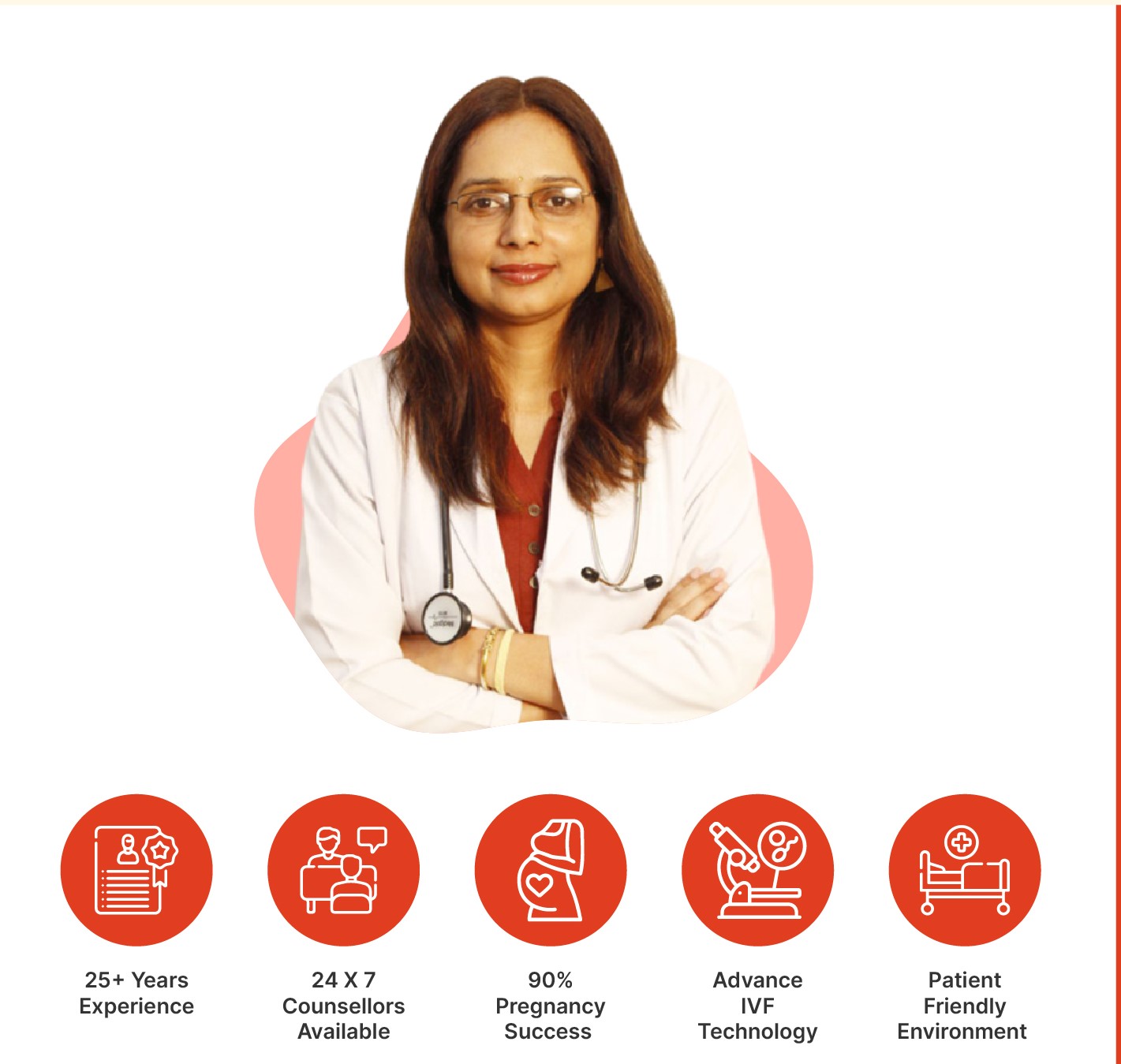FREQUENTLY ASKED QUESTION
What is infertility?
Inability of a couple to conceive after having regular unprotected coitus for 1 year is called infertility.
There are 2 types of infertility:
Primary infertility : means couple having no pregnancy since they are married.
Secondary infertility : means couple has once conceived after that they are unable to conceive.
What are the causes of infertility?
– 40 % causes are found in males
– 40% causes are found in females
– 20% are unexplained causes
Male causes of infertility:
Abnormal semen parameters like:
- – Oligozoospermia
- – Asthenozoospermia
- – Teratozoospermia
- – Hypospermia
- – Highly viscous semen
- – Azoospermia
- – Tuberculosis and mumps
- – Occupational hazards
- – Cancer treatment
- – Radiotherapy / chemotherapy
- – Smoking/caffeine/alcohol intake
- – Undescended testes
- – Varicocele
Female causes of infertility:
-
- – Tubal factor
- – Ovulatory dysfunction
- – Cervical factor
- – Endometriosis
Uterine factors :
- – Fibroid
- – Adenomyosis
- – Septum
What if husband is having nil sperm count?
If husband’s sperm count is nil, then we advise him to go for serum FSH and Fine-Needle Aspiration Cytology(FNAC) of testis or Testicular biopsy. If we found good number of sperms along with the normal morphology, then we can use his sperms for ICSI . If there is no sperm found in FNAC or there is maturation arrest , then he has to go for donor sperm option in which we will match skin, hair , eye colour and , blood group .
What is the success rate and time required for the IUI and IVF treatment?
Success rate of IUI is between 15-20%.The process takes only 16 days to complete (from day 2 till day 16).
Success rate of IVF/ICSI is between 40-50%. The whole process takes 6-8 weeks . In the first 4 weeks , we investigate the couple and in the next 4 weeks we can do the treatment.
How many embryos do you transferred and what about the extra embryos?
The transfer of embryos depends upon the patient’s history, her age and number of embryos available. we usually transfer 2-3 embryos .
We can transfer embryos on day 2 or day 3 or day 5 (blastocyst) also.
We can cryofreeze (vitrification method) the excess embryos if they are of good grade for many years.
What are the chances of having multiple pregnancies?
If we place 2 embryos , the chances of having single baby is 70-80%, only 20-30% will have twins .If we place 3 embryos ,the chances of having single baby is 70% , twins 25-28% triplets 2-5%.
Can egg donation help me?
We do have Donor Egg Programme in the following cases :
In premature Ovarian failure
In case of genetic diseases
In repeated IVF failure with own eggs
We encourage you to bring your own egg donor with you , but if you can’t arrange your egg donor then we will be happy to provide you an egg donor . Ideally donor should be between 21-32 years .She should be having regular menstrual cycles. She should be having genetically normal and healthy kids.
We screen all the egg donors for medical diseases, infectious diseases like HIV, Hepatitis B, Hepatitis C, VDRL and Thalassemia. We synchronize the egg donor and the recipient of the egg. This allows the eggs to be collected from the donor and transfer to the recipient at the best possible time .This is done through IVF procedure .We match the skin colour , hair colour , eye colour and the blood group of the recipient with the egg donor.
What is the Probability of Success?
The probability of success with IVF treatments depends upon a number of factors like the age of the woman, the cause of infertility, the quality of eggs retrieved and the quality of the semen.
“The single most consistent variable affecting ovarian reserve is the woman’s age. This is because a woman is born with all the eggs she will ever have. In most women in their 20s about 2/3 of the eggs are genetically normal or balanced. However, there will be some that are genetically abnormal or unbalanced. It appears that the best eggs are ovulated first. The older a woman is, the fewer genetically balanced eggs she has left to respond to fertility drugs. This age relationship holds true even in the fertile population. At age 35 about 40-50% of eggs are chromosomally normal, at age 40 about 10-20% and then much fewer after that. Therefore, in older women fewer normal embryos are available for implantation into the uterus. Hence, healthy women over 35 are less fertile than their younger counterparts. Women 40 and over may have only a 20% live birth rate with IVF treatment using their own eggs, even though several embryos are replaced into the uterus.”
The national averages (2012) show the following probabilities:
Female age Live birth rate per retrieval
< 35 40.7%
35-37 31.3%
38-40 22.2%
41-42 11.8%
The success rate for having a baby depends a great deal upon the type of treatment e.g. IVF treatment or donor egg etc.
You will see in the table below that, after a certain age, the probability of successfully having a baby increases considerably with a donor.
Treatment type Live birth per transfer
Fresh transfer 56.6%
Frozen/thaw transfer 37.2%



